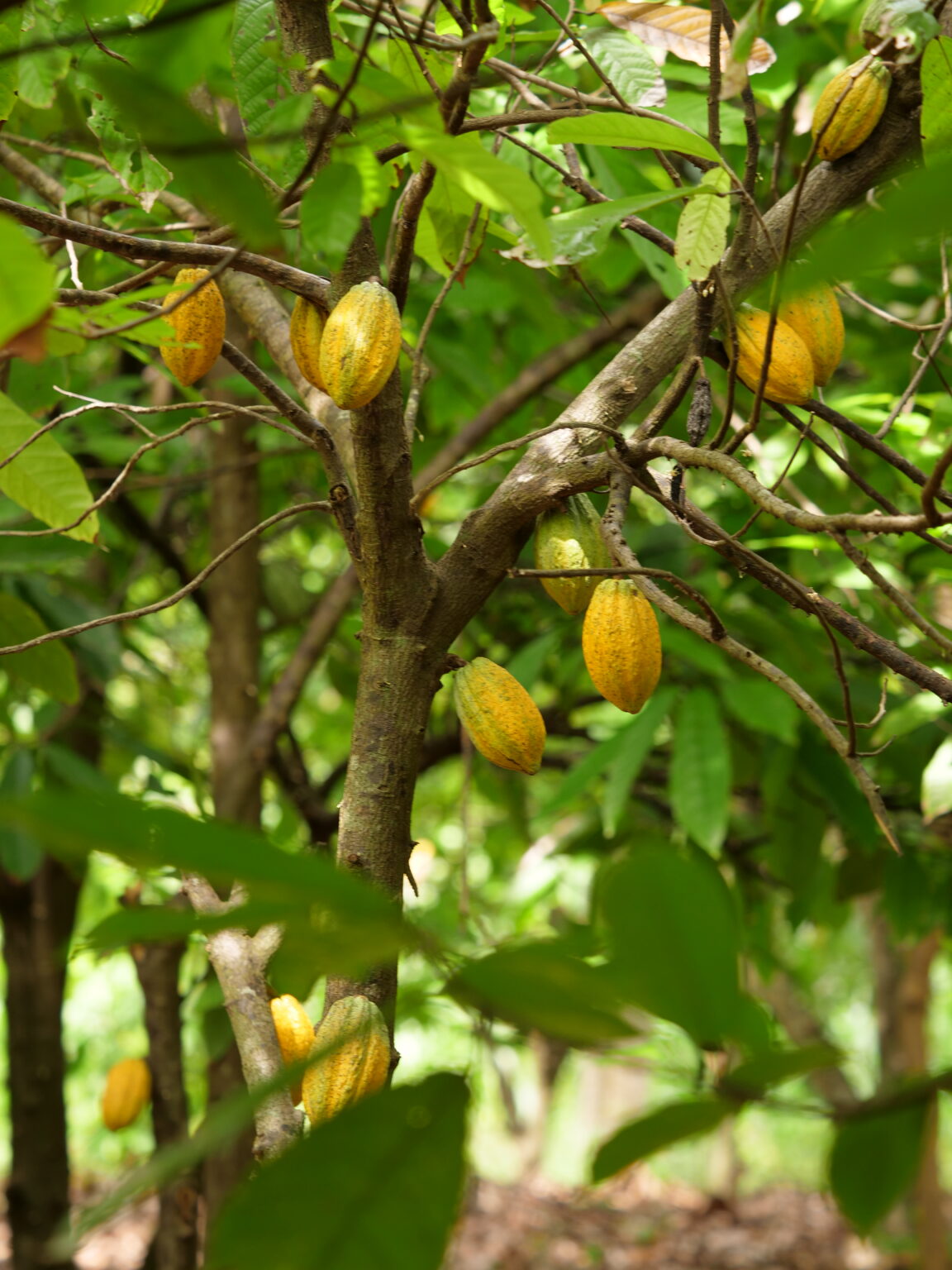Cocoa is grown in tropical regions, at latitudes 20ºN and 20ºS from the equator, where warm and humid climate conditions are ideal for its growth.
The process begins with choosing the best soil conditions, usually nutrient-rich soils that provide the necessary nutrition for the plant. Preferably, the soil should allow the roots to grow to a depth of 1.5 metres, have balanced chemical properties, the right percentage of organic matter and the right pH.
It is also important that the planting is carried out with a spacing between the trees of 3 square metres, as aeration of the soil is essential for quality production. The cacao tree is relatively small, reaching between 4 and 15 metres in height. It needs shade to bear fruit, which is why it is often interspersed with other trees, such as timber or fruit trees.
The cacao tree begins to bear fruit between 2 and 3 years old, reaching maturity at around 7 years, and each tree can produce between 15 and 40 fruits per year. The average life expectancy of the cacao tree varies between 20 and 60 years.
The cocoa fruit is an elongated capsule, varying in size and weight. The shape and colour of the fruit vary depending on the cocoa variety. The fruit grows directly on the trunk and branches of the tree. Inside the fruit are the pods, each containing between 20 and 50 cocoa beans.
Harvesting cocoa consists of picking all the ripe fruit from a plantation by cutting off the stalks. This process is carried out manually, using different tools depending on whether the pods are more or less accessible to the workers.
Once the fruit has been opened, the pods and pulp are placed in boxes covered with banana leaves and jute sacks. This begins the fermentation process: one of the most important moments in the process of transforming cocoa into chocolate.
This is followed by drying, an essential process that aims to reduce the amount of water contained in the beans so that the cocoa is well preserved without the risk of fungus and mould.
After drying, the cocoa is transported to the place where the selectors are located to be sorted. The cocoa is then bagged according to the batches selected, preferably in warehouses that fulfil the strictest and most suitable environmental conditions, particularly regarding temperature, relative humidity and aeration.
The cocoa is then ready to be shipped to the chocolate factories, where a new journey and discovery begins: the transformation of cocoa into chocolate!


